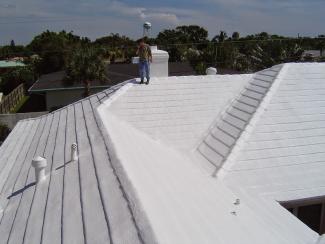The Environmental Law Institute researches local government best practices on climate mitigation and adaptation. In conjunction with this work, ELI develops model policies and ordinances as well as participates in convenings that produce recommendations such as Mayor Cooper's Sustainability Advisory Committee 2021 Report on the Metropolitan Government of Nashville and Davidson County's Climate Change Mitigation Action Plan.
As climate change worsens, extreme heat will affect communities across the US more frequently and more intensely. This problem will be especially pressing for cities, where temperatures can exceed those of outlying areas by up to seven degrees. This phenomenon, known as the urban heat island effect, leads to increased heat-related illnesses and deaths, worse air quality, and higher energy consumption (and therefore, higher energy bills). Furthermore, research has shown that urban heat islands disproportionately affects low-income and minority communities.

No single breakthrough will be enough to deal with extreme heat, let alone its root cause, climate change. Yet, one emerging solution to this problem—cool roofs—appears to be a win-win climate solution: for both local adaptation and global mitigation efforts.
Cool roofs differ from conventional roofs by utilizing lighter colors and special pigments to reflect more solar radiation (i.e., sunlight) back off the Earth’s surface, and into space. A conventional, dark-colored roof may reflect as little as 4% of the sunlight it faces. Everything else is converted into heat upon contact with the roof, some of which is absorbed by the building itself. The rest of that heat is emitted into the outdoor air, warming the surrounding community, as well as the Earth as a whole. Cool roofs, on the other hand, can reflect as much as 85% of sunlight it faces back into space, which means that as little as 15% is absorbed or emitted as heat.
This difference in solar reflectivity can lead to significant benefits for residents. First, in non-air-conditioned spaces, cool roofs can improve safety and comfort by reducing maximum temperatures by 2.2–5.9°F. For air-conditioned spaces, cool roofs can decrease the need for air conditioning, thus lowering net annual energy use associated with cooling by 10–20%. This lower energy consumption can save households with an average-sized roof $90 a year, which is equivalent to $1,665 in savings over the roof’s lifetime. These energy savings can be significant when implemented at scale; in fact, retrofitting 80% of commercial buildings in the U.S. with cool roofs would lead to $735 million in net annual energy cost savings. It should be noted that because cool roofs trap less heat internally, they may increase the need for heating on cold days, especially in colder climates. However, on average, the cooling load reduction far outweighs the “heating penalty.”
In addition to providing cooling and cost savings benefits to internal residents, cool roofs also provide both local and global benefits. First, due to the reduction in emitted heat, cool roofs lower the local outside air temperature, which can prevent heat-related illnesses and deaths and improve air quality by slowing the formation of smog. Furthermore, as they take on some of the burden of air conditioners, cool roofs can reduce peak electricity demand, which can lower peak electricity costs and help prevent power outages.
Additionally, cool roofs also help mitigate global warming by lessening the amount of heat that is trapped by greenhouse gases (GHGs) within the Earth’s atmosphere. In fact, researchers have found that increasing the reflectivity of all roofs in cities in the northern hemisphere—by a moderate amount, such as from 5% to 30%—could have game-changing benefits. This wide-scale change would lead to a massive warming reduction, equivalent to a one-time offset of 31 gigatons of GHG emissions, which is more than the worldwide GHG emissions in 2006 of 28 gigatons.
On the ground, cool roofs can be installed in two ways: either as part of a roof replacement or as a liquid applied coating to a functioning roof. Though the economics of cool roofs depend on a number of factors, they are relatively affordable, especially for cases when a roof replacement is needed anyway (see GCCA’s breakdown of different types of cool roofs and their costs). New research also suggests that using cool roofs and solar panels in combination can increase the efficiency of the solar panels by keeping them cooler.
In order to encourage cool roofs, cities could require a certain level of reflectivity for new roofs through provisions in building or land use codes (for example, see Los Angeles’ Green Building Code or Atlanta’s Sustainable Development Design Standards). They could also provide financial incentives to increase the uptake of cool roofs and make it a more affordable option. Finally, local governments could consider how federal funding from the Inflation Reduction Act (IRA) may lower costs for cool roofs—for residential, commercial, or even municipal projects—through the home energy efficiency rebate and the smart surfaces incentive.
Cool roofs represent a special mitigation and adaptation solution in that they deliver both internal and external benefits. Not only do they yield energy savings and comfort benefits to owners, but they also generate local and global benefits for climate and human health by reducing trapped heat. And for residents that value roof aesthetics, here’s the icing on the cake: with new pigment technology, cool roofs can come in a variety of materials and colors, from terracotta clay to dark-colored concrete tiles.
